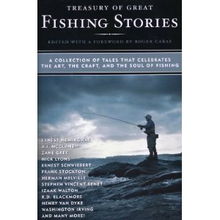Content:
Fishing, an age-old pastime, continues to captivate anglers of all ages and skill levels. Among the various fishing techniques and equipment, the spinning rod and reel combo, often referred to as "spinning," has gained immense popularity. One of the most crucial aspects of spinning fishing is understanding how to properly hang a spinning rod, specifically the use of a spinning rod with a spinning reel. In this article, we will delve into the art of fishing and provide you with essential techniques for mastering the art of hanging a spinning rod, ensuring you have a successful day out on the water.
Understanding the Spinning Rod and Reel
Before we dive into the specifics of how to hang a spinning rod, it's important to have a basic understanding of the components involved. A spinning rod is designed with a lighter, more flexible blank, making it ideal for casting lighter lures and baits. The spinning reel, on the other hand, is typically smaller and lighter than its baitcasting counterpart, with a bail system that allows for easy retrieval of the line.
Selecting the Right Equipment
The first step in mastering the art of hanging a spinning rod is to ensure you have the right equipment. Here are a few key factors to consider:
Rod Length: Spinning rods come in various lengths, typically ranging from 6 to 12 feet. The length you choose depends on the type of fishing you plan to do. Longer rods are better for casting long distances, while shorter rods are more versatile for closer-range fishing.
Line Capacity: Check the line capacity of your spinning reel to ensure it matches the type of line you plan to use. Most spinning reels can accommodate monofilament, fluorocarbon, or braided lines.
Reel Type: While spinning reels come in various types, the standard spinning reel is the most common. It features a bail system that allows for easy line retrieval and is suitable for a wide range of fishing situations.
How to Hang a Spinning Rod: Step-by-Step Guide
Now that you have the right equipment, let's go through the step-by-step process of hanging a spinning rod:
Attach the Reel: Begin by unscrewing the reel seat and sliding the reel onto the rod. Make sure the reel is centered and snug against the rod. Tighten the reel seat securely to prevent any movement.
Line Spooling: Take your chosen line and thread it through the guides on the rod. Start from the tip of the rod and work your way down to the reel. Ensure that the line is tight and runs smoothly through the guides.
Attach the Line to the Reel: Once the line is through the guides, it needs to be attached to the reel. Most spinning reels have a line clip or a spool pin that you can use to secure the line. Simply thread the line through the clip or pin and tighten it securely.
Adjust the Drag: The drag on a spinning reel is crucial for managing the fight with a fish. Adjust the drag to a setting that allows the line to move smoothly off the reel when a fish takes the bait. It's important to find a balance between too tight and too loose.

Bait and Lure Preparation: Attach your bait or lure to the end of the line. This can be done using a variety of knots, such as the improved clinch knot or the Palomar knot. Ensure that the knot is tight and secure.
Practice Casting: Before heading out to the water, practice casting your rod. Learn how to cast with a smooth, consistent motion, and become familiar with the feel of the rod as it loads and unloads during the cast.
Tips for Successful Spinning Fishing
Once you've mastered the art of hanging a spinning rod, here are a few tips to help you become a more successful angler:
Choose the Right Bait: Match your bait to the species you're targeting. Different fish are attracted to different types of lures and baits.
Understand the Water: Study the water you're fishing and look for areas where fish are likely to be. Obstacles like rocks, logs, and weed beds can be prime spots for fish.
Patience is Key: Fishing requires patience. Don't get discouraged if you don't catch anything right away. Fish can be unpredictable, and sometimes it takes time to find them.
Stay Informed: Keep up with the latest fishing techniques and trends. This can help you stay ahead of the curve and increase your chances of success.
In conclusion, mastering the art of hanging a spinning rod is a fundamental skill for any angler looking to improve their fishing experience. By following the steps outlined in this article and practicing regularly, you'll be well on your way to becoming a more skilled and successful spinner. Happy fishing!












